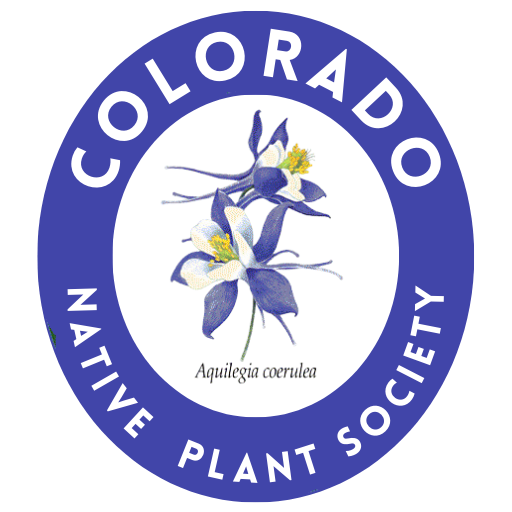Kevin Norton
Acting Associate Chief
USDA Natural Resources Conservation Service
1400 Independence Avenue SW, Washington, DC 20250
Re: Docket Number NRCS-2019-0003-0001
The undersigned organizations, representing conservation, wildlife, and agriculture organizations, thank you for the opportunity to weigh in on NRCS conservation practice standards. We write to express our support of incorporating stronger guidance on the preferential use of diverse native plants to support wildlife, pollinators, and soil health in conservation practice standards.
Studies have shown native plants provide equal or better benefits for soil conservation, water quality, carbon sequestration, ecosystem function, and livestock forage, while also providing excellent habitat for wildlife and pollinators. Congressional agriculture committee leaders recognized the importance of native plants while writing the 2018 Farm Bill, stating the following in the 2018 Farm Bill Conference Report:
The Managers recognize the benefits of native vegetation to improve water and air quality and enhance soil health. By encouraging the adoption of native vegetation seed blends, USDA programs are supporting habitat restoration for the northern bobwhite, lesser prairie-chicken, greater sage-grouse, other upland game birds, songbirds, monarch butterflies and pollinators. The Managers encourage the use of native vegetation where practicable.
However, many USDA practices have historically relied on introduced plant materials for soil and water conservation and livestock forage. While introduced plant materials may be effective for soil or water conservation purposes, the planting of introduced plant species impedes native habitat restoration and works at cross purposes to other USDA programs that are supporting habitat restoration for upland game birds, songbirds, monarch butterflies and pollinators, resulting in an inefficient use of taxpayer dollars. Furthermore, while we acknowledge that there are concerns about the cost of native seed mixes for restoration, we believe this concern is not justified for a few reasons: native vegetation provides greater value; cost effective native seed mixes can be developed, where more expensive species are reduced or removed from seed mixes in order to balance cost with high-quality native plants; and finally, seed calculations using seeds per square foot rather than pounds per acre can significantly reduce the cost.
In particular, we are concerned that structural conservation practice standards with revegetation components or other practice standards that include revegetation are more often than not a missed opportunity when it comes to native plants. Many practices point to Critical Area Planting (342) for the revegetation component, which states that “native species may be used when appropriate for the site.” We urge you to update the standard to clarify that “diverse native species should be preferentially used unless inappropriate for the site.”
Additionally, the following NRCS conservation practice standards have revegetation components that should have stronger guidance regarding the preferred use of native plants: Dam Diversion (348); Grade Stabilization Structure (410); Heavy Use Area Protection (561); Irrigation Pipeline (430); Land Reclamation, Landslide Treatment (453); Livestock Pipeline (516); Mine Shaft and Adit Closing (457); Open Channel (582); Obstruction Removal (500); Saturated Buffer (604); Structure for Water Control (587); Surface Drain (608); Underground Outlet (620); Water and Sediment Control Basin (638).
Finally, we encourage you to revisit other revegetation practices, such as Conservation Cover (327), Hedgerows (422), Pasture and Hay Planting (512), and Range Planting (550), among others, to ensure that these practices have strong guidance on the preferential use of diverse native plants, including perennial wildflowers, to benefit pollinators and wildlife.
We thank you for the opportunity to comment on these practice standards, and look forward to working with you to ensure that NRCS conservation programs are implemented in a way that encourages the planting of diverse native plants to support soil, water, and wildlife.
Sincerely,
National Organizations:
National Wildlife Federation
National Bobwhite Conservation Initiative
Izaak Walton League of America
American Bird Conservancy
American Ornithological Society
American Woodcock Society
Association of Fish and Wildlife Agencies
Center for Invasive Species Prevention
Defenders of Wildlife
Earthjustice
Endangered Habitats League
Environmental Defense Fund
International Bird Rescue
National Association of Invasive Plant Councils
National Deer Alliance
National Latino Farmers and Ranchers Trade Association
Native Plant Conservation Campaign
North American Grouse Partnership
Quail and Upland Wildlife Federation
Ruffed Grouse Society
Rural Advancement Fund of the National Sharecroppers Fund
Rural Coalition
Rural Development Leadership Network
The Wildlife Society
Theodore Roosevelt Conservation Partnership
Trout Unlimited
Wild Farm Alliance
Regional/State/Local Organizations
Arizona
-Sonora Desert Museum
Audubon Naturalist Society
Bucks County Audubon Society
Burroughs Audubon Society of Greater Kansas City
California Native Plant Society
Coastal Prairie Partnership
Colorado Native Plant Society
Colorado Wildlife Federation
Florida Exotic Pest Plant Council
Florida Native Plant Society
Forest and Woodland Association of Missouri
Forest ReLeaf of Misouri
Forrest Keeling Nursery
Illinois Council of Trout Unlimited
Illinois Native Plant Society
Institute of Botanical Training, LLC
Kalmiopsis Audubon Society
Malibu Monarch Project
Maryland Ornithological Society
Michigan Audubon
Michigan Wildlife Conservancy
Mid-Atlantic Invasive Plant Council
Milwaukee Olmsted Bird Conservation Alliance of
Wisconsin Mississippi River Trust
Missouri Prairie Foundation
Missouri River Bird Observatory
Missouri Stream Team Watershed Coalition
Montana Native Plant Society
Montana Wildlife Federation
Naples Zoo
Natural Heritage Institute
NatureCITE
Nebraska Wildlife Federation
New Jersey Audubon
North Carolina Native Plant Society
North Dakota Wildlife Federation
Orleans Audubon Society
Peckosh Landscaping
Platte Land Trust
Prairie Rivers Network
Pure Air Wildlife Management Cooperative
Quad City Audubon Society
Roeslein Alternative Energy
Saint Louis Zoo
Salem Audubon Society
South Dakota Wildlife Federation
South Grand River Watershed Alliance
Southern Maryland Audubon Society
Tallgrass Prairie Center
Tennessee Native Plant Society
Tennessee Naturalist Program
Tennessee Ornithological Society
Texas Pollinator Powwow
The Saint Louis Zoo
Utah Native Plant Society
Virginia Native Plant Society
Western Nebraska Resources Council
Wild Birds Unlimited of Syosset
Wildlife Mississippi
